
Feel free to add tags, names, dates or anything you are looking for
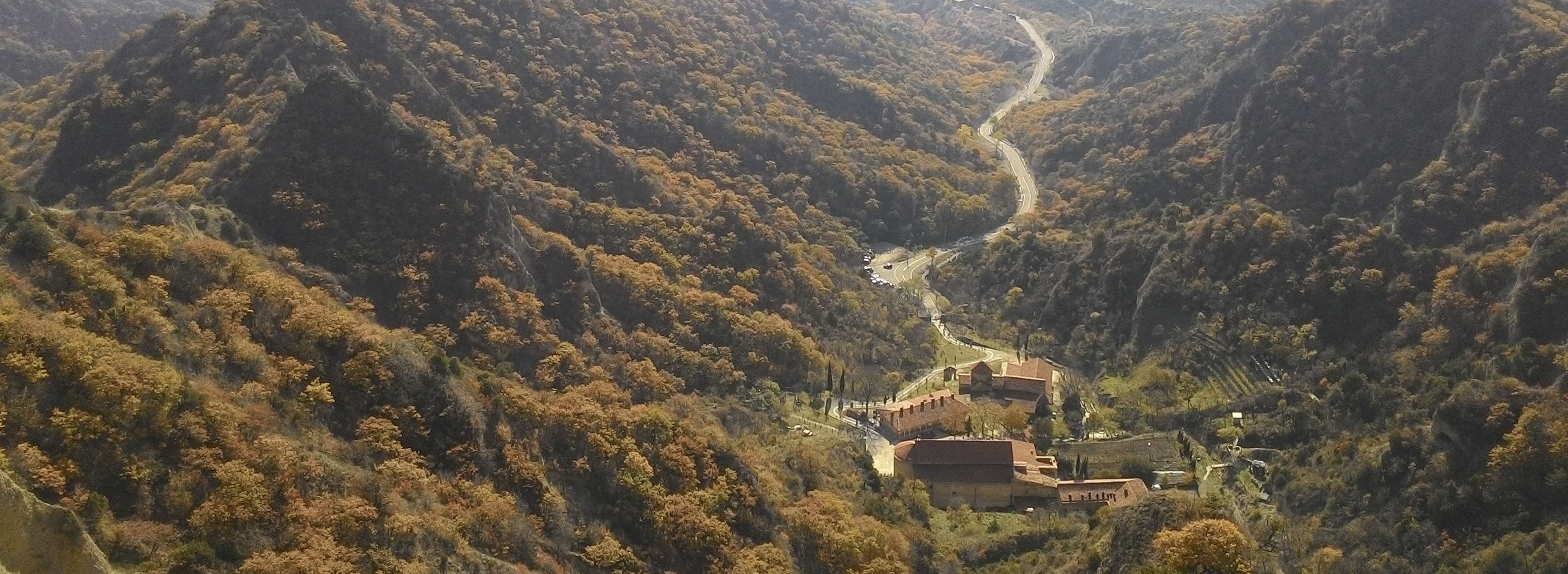
The Georgians learned about monastic life as early as the end of the fourth century. A crypt where monks were buried, which was discovered in the village of Tsilkani, near the ancient capital of Georgia, Mtskheta, is a clear indication of this. Opiza monastery in southern Georgia, founded by King Vakhtang Gorgasali, shows that Georgian monasticism continued its existence into the fifth century. Although monastic life was quite well known in Georgia, the true rise of Georgian monasticism is rightly associated with the arrival in Iberia of the ascetic preachers from the deserts of Syria, sometime around the 540s. According to Georgian ecclesiastical legend, their number was thirteen, however, various sources show that there were more. These monks were John of Zedazeni (the leader of the group), Shio of Mghvime, David of Gareja, Anthony of Martkopi, Jesse of Tsilkani, Abibos of Nekresi, Joseph of Alaverdi, Isidore of Samtavisi, Stephen of Khirsa, Zeno of Ikalto, Thaddeus of Stepantsminda, Phyrrus of Breti, Michael of Ulumbo, Theodosius of Mrekhi and Elijah the Deacon.
The men were both ascetics and missionaries, whose mission was to preach Christianity, and the foundation of monasteries became part of this mission. It is hard to know to which theological doctrine these ascetics adhered, and there is a great variety of scholarly opinion regarding this fact, seeing some declaring them Chalcedonians, others anti-Chalcedonians, while part of the academic community believes them to have been Nestorians.
John was the leader of this group of Assyrian monks. He became known as John of Zedazeni as, after his arrival in Iberia, he took up residence on Mount Zedazeni near Mtskheta. John was born near Antioch and left home at a young age, heading out into the desert to pursue eternal life. He settled in a cave near Antioch and was soon joined by other Christians who desired an ascetic life. They spent days in vigilance, prayer, and in the study of biblical and hagiographical stories. Through his strictly ascetic lifestyle, John quickly acquired the gift of healing and miracle working, and people soon started to come to him for help. It was here that John recognized the danger of spiritual pride. The main passion most feared in ascetic literature is arrogance and vain glory, being the greatest peril for a man climbing the spiritual ladder. A faithful Christian rejects all earthly pleasures, refuses to live in the lies and deceptions of this world; they abstain from sexual life, have no need for money or any possessions, fast intensely and even refuse to eat cooked food. John knew that in this spiritual success, the most dangerous thing can happen - they can begin to think that they are much better than those around them; they forget that they were sinners, and thus become prone to yet more sin.
![]()
The Thirteen Syriac Fathers - Modern Icon
John of Zedazeni had two reasons to leave his monastery in Syria. First was his growing popularity, and second, he had a mission to accomplish. According to the hagiographical legend, God appeared to John in a vision and told him to go to a country in the north (Iberia/Georgia) where the Church of Christ desperately needed missionary work. At first, John wanted to go alone, but his disciples protested: They would not abandon their pastor. They prayed together, and the next day the names of the disciples who would go with John were revealed. The other disciples became upset, but John calmed them and told them that they should continue their mission in the Syrian desert. Afterwards, he and his chosen disciples said farewell to their brothers and began their journey to the “northern land.” They had to cross hot deserts and mountains, dense forests and deep ravines to reach Iberia. According to legend, Catholicos Eulalios was notified by a divine vision as they crossed the borders of Iberia and, already waiting, met the holy men in Mtskheta. John and his disciples prayed in the main church of Mtskheta (The Church of the Living Pillar) and stayed there for some time.
One day, John saw a dark cloud hovering over Mount Zedazeni on the northeastern outskirts of Mtskheta. He asked the Catholicos about the mountain, and was told that during the time of the pagan kings of ancient Iberia, the idol of the great deity Zadeni had been erected at the top of the mountain, and there bloody rituals were performed to please the cruel god. Now, strange phenomena were being seen on the mountain, and stories abound of bizarre creatures encountered in the dense forest of Zedazeni. Despite the fact that the idol of Zadeni had been destroyed during the conversion of Georgia in the fourth century, his cult remained on the mountain, as did his demons.
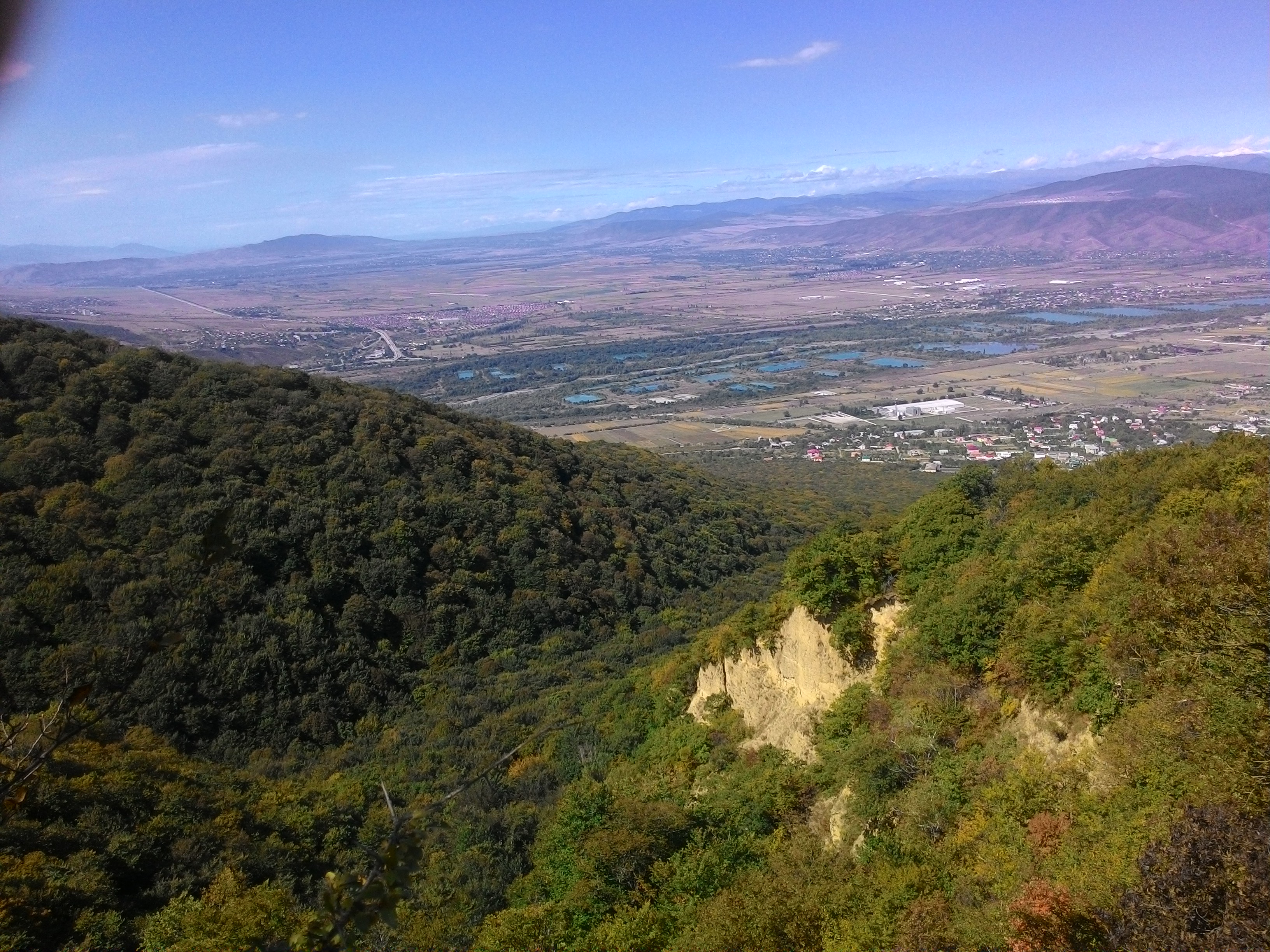
View From Mount Zedazeni
John prayed all night and set off for Mount Zedazeni the next day. He crossed the Aragvi River, and disappeared into the forest. After several hours of walking, John reached the top of the mountain. There, he saw the ruins of the pagan altar and shards of the stone statue of the ancient deity. The altar and shards were covered in dried blood. Then the warm spring breeze brought with it a terrible stench. John couldn’t understand what could produce such a smell and went in search of it. He found a cave not far from the pagan altar and entered. There was a dim light coming from outside and complete silence within. He put aside his staff and took out the Gospel and the Psalter from his tattered bag. He knelt and began to pray. He didn’t even notice that the sun was setting over the hills and night was falling. In The Life of St John of Zedazeni, an unknown author describes St John meeting with the demons who dwelt at the top of the mountain. With the help of God, John banished them from the mountain and founded a monastery there, into which he moved with his disciples. After some time, from Zedazeni mountain, St John sent his disciples to different corners of the Iberian kingdom to preach the word of God and combat the surviving paganism and Zoroastrianism.
St Shio was one of John’s most distinguished disciples. In his missionary trip, St Shio traveled west of Mtskheta, a route which passes through rugged, scrubby hilltops. There is a strange sense of calm as you look out over those quiet hills, which are often covered in clouds of mist. Today, the serenity of the place is disrupted by the modern highway, but in the days when St Shio descended from Mount Zedazeni and walked that path, those places were engulfed in utter wilderness. Various settlements had existed there during the reign of the pagan kings, but now only poor ruins covered in moss and grass can be seen.
After walking for several hours, St Shio reached a ridge dotted with several natural caves. He entered one, rested for a few minutes, and then began to pray and sing psalms. As in the case of St John, The Life of St Shio also describes an encounter between St Shio and demons, and a vision where the Holy Mother of God and St John the Baptist appear to him to give encouragement in his endeavors. St Shio thus decided to stay in the cave.
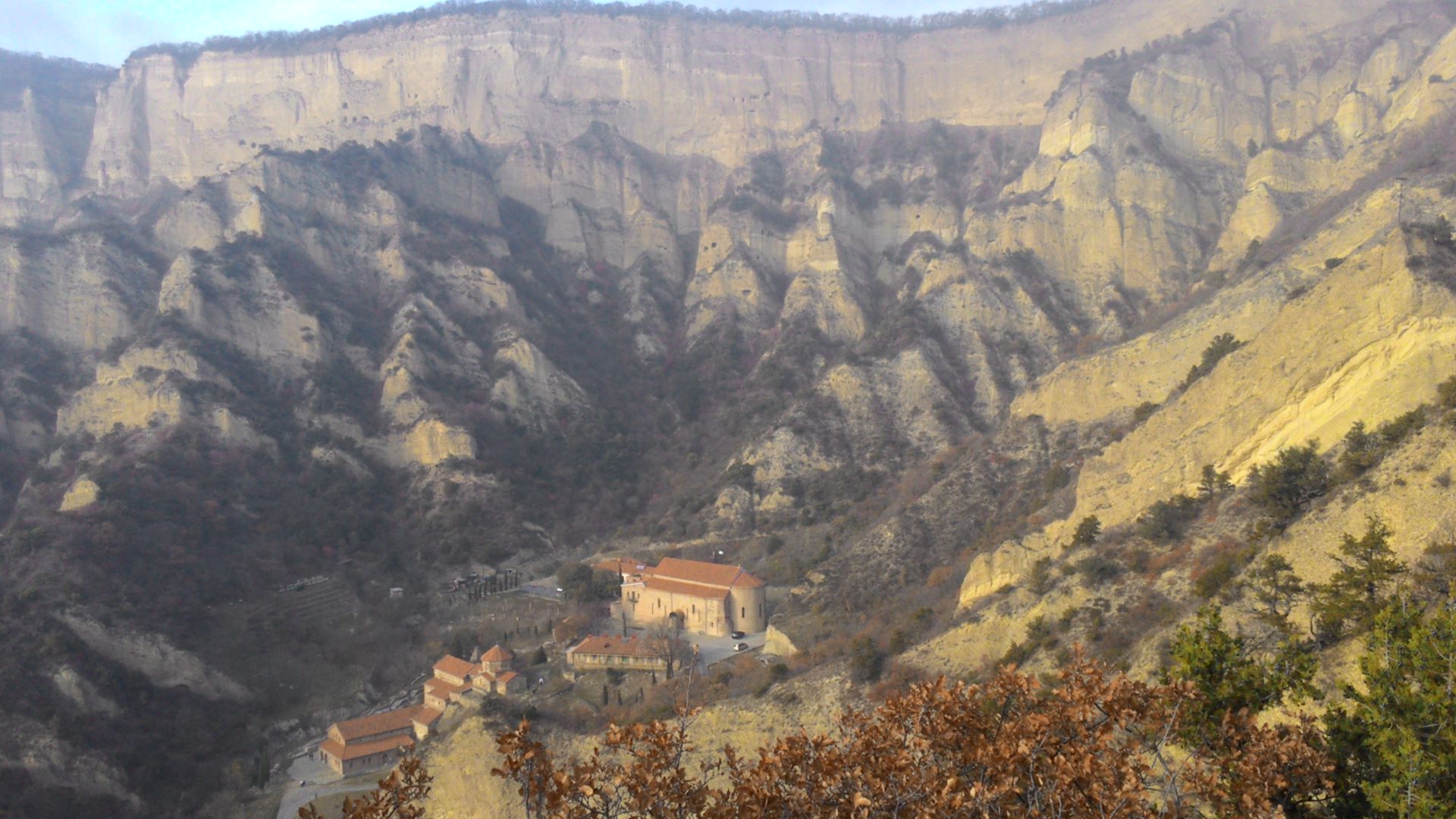
Shio-Mghvime Monastery - general view
Evagrius – a local nobleman – was the first to intrude on his solitude. A respected member of the Georgian nobility and the king’s close friend, Evagrius often went hunting in the area, but had somehow never come across the holy man, until one day he saw a raven bringing food to the cave where the holy man lived. He followed the raven and saw a strange hermit coming out of the cave. Evagrius asked the holy man what he was doing there. St Shio explained that he was a Christian monk who had rejected the sinful world and was living there in complete solitude. Evagrius spent the whole day talking to Shio about spiritual matters. At dusk, he left St Shio and returned home.
After a few days, Evagrius went back to Shio and asked him to accept him as his disciple, because he sincerely wanted to dedicate his life to Christ. Shio told Evagrius about the hardships of monastic life and warned him that the life was far from easy, yet Evagrius was firm in his decision. When St Shio saw that Evagrius had made up his mind to dedicate himself to ascetic devotion, he gave him his staff and ordered him to cross the Mtkvari River. If the river cleared the way for Evagrius upon his return, it would mean that his intention was pleasing to God, and St Shio would accept him as his disciple. Evagrius did as St Shio ordered, and a miracle happened – the river gave way. St Shio accepted the wealthy nobleman as the first member of his future community. Soon, many other men joined them in the search for eternal life.
When the Georgian King Parsman V (547-561) learned that Evagrius had given up his worldly life and gone to the monastery, he became furious and decided to force Evagrius to return to his duties. The king went to the monastery. The monks were frightened when they saw the royal retinue, and then the king himself, dressed in silver mail with a golden crown on his head. King Parsman entered the monastery, stopped near the cave where St Shio lived, and asked one of the frightened brothers to call Evagrius. Evagrius came out of the cave and bowed to the king. King Parsman wanted to reprimand him for leaving the royal service without consulting him, but then he saw St Shio come out of his own cave and walk towards him down the slope, his wooden staff in hand, his face bright white in the light and a colored halo on his head. Parsman jumped from his horse, threw off his crown and knelt before the monk to ask for his blessing. St Shio brought the king to his feet and blessed him. And it was during this meeting that a miracle happened: One of the king’s men had been wounded in the eye by an arrow during battle, but in St Shio’s presence, his eye was healed. The king immediately ordered that large pieces of land be given to the monastery, and he also gave the brotherhood the cross and the gospel which had belonged to the great king Vakhtang Gorgasali a hundred years prior. And then he ordered the construction of a church for the brotherhood. This sixth-century church still stands today in the Shio-Mghvime Monastery.

The Sixth-Century Church of Shio-Mghvime Monastery
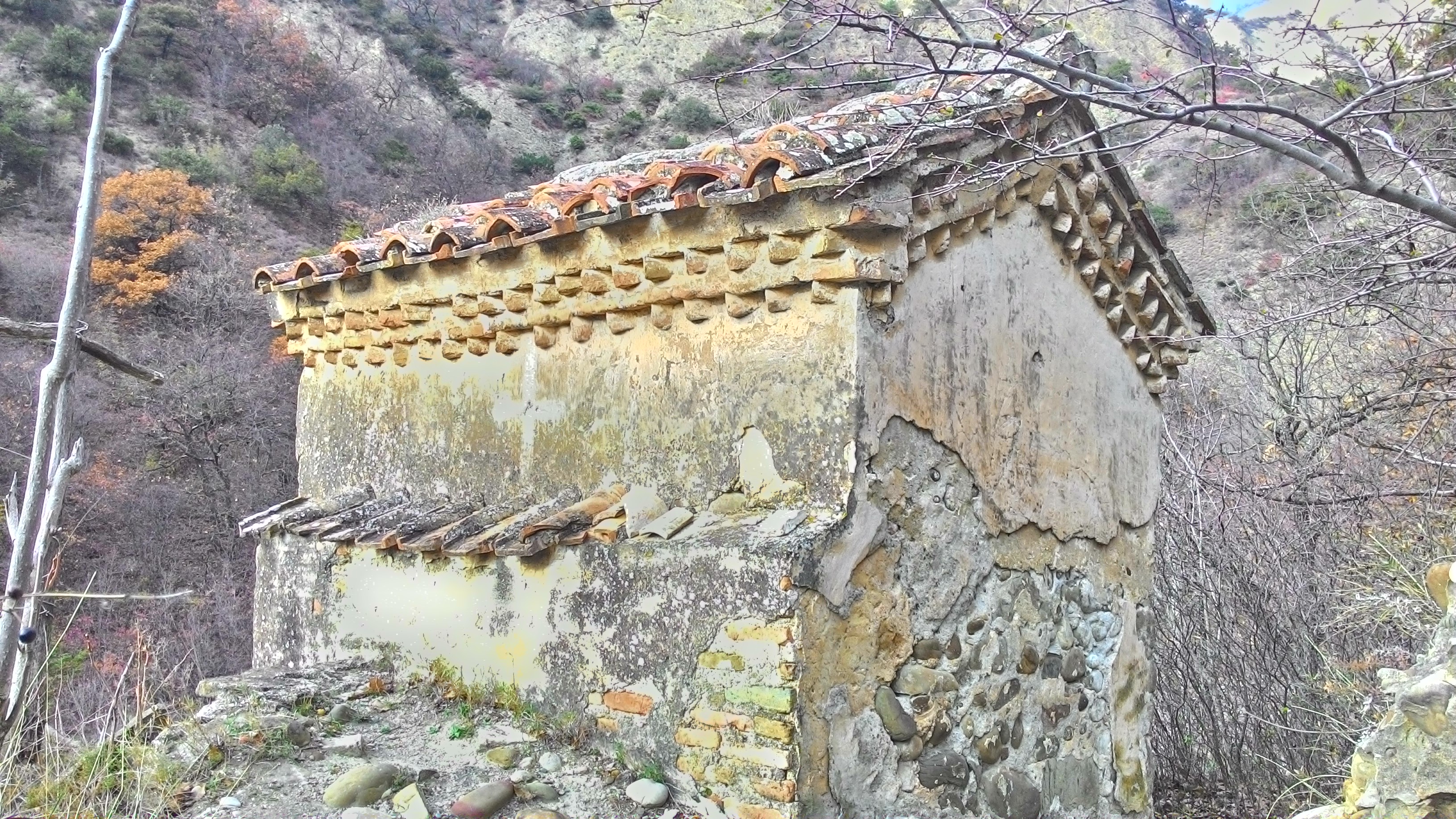
Small Chapel in the Shio-Mghvime Monastery
St Shio spent his last days in a deep, dark grotto. ‘Mghvime’ is grotto in Georgian, hence the name of the monastery: Shio-Mghvime. The monastery grew quickly, and by the end of the sixth century, it had already become one of the most powerful and wealthiest monastic communities in the Iberian kingdom. Throughout the centuries, it always enjoyed royal support, until the Russians abolished the political and ecclesiastical independence of Georgia at the beginning of the nineteenth century.
.jpg)
Shio-Mghvime Monastery (View from the Skhaltba Ridge)
Another famous student of John of Zedazeni - David of Gareja - founded a monastery in the Gareja desert, near the modern border with Azerbaijan (a number of the Gareja monasteries are located on Azerbaijani territory). Aside from the Gareja Desert, a popular urban legend links St. David’s activities to the Georgian capital, Tbilisi. According to this legend, after St John sent his followers to preach throughout the Georgian kingdom, St David went south, to Tbilisi, climbed the mountain that dominates the city, and settled in a cave there. This mountain became known as ‘Mtatsminda’ or Holy Mountain. St David spent some time on this mountain, then he headed east to the deserts of Gareja.
In general, Georgia is a country of icy peaks, densely forested mountains, deep gorges and fertile fields, and it is extremely rich in water. Countless large and small rivers, springs, waterfalls and lakes make this small country one of the region’s most important water resources. But if you go southeast from Tbilisi, nature changes in ways that are not typical for Georgia. Here, a traveler will encounter vast areas of semi-desert; windswept fields covered with yellow grass that continue southeast, turning into bare, scrubby fields and rugged hilltops in the land of the Gareja Desert. The yellow, purple, azure and green colors of the desert resemble a beautiful mosaic. One can find many caves there, carved into the rocky hills by nature itself. The desert is always quiet, and the wind blows often. It is unbearably cold in winter and terribly hot in summer, and one can hardly find water. Snakes and snake-like lizards are the main inhabitants of the area.
It is not known what brought St David there, but it was likely a desire for solitude. He came with one of his disciples from Tbilisi, Lucian, who was probably Georgian. They took shelter in a cave, which is now the main church of the Gareja Monastery. They were alone. On hot days, the sun burned the desert, and at night the desert sky was lit by the stars or covered with hurried clouds driven by the desert winds. St David and Lucian found a well from which they could get water. The desert grass was their main food. But spring was ending and the terrible summer heat began to dry out the grass, until eventually St David and Lucian ran out of food. Lucian, desperate, started complaining that they were starving and no one would help them. “Do not be like those of little faith,” St David told his disciple. “Trust in God.”

David- Gareja Monastery
A legendary account preserved in The Life of St David of Gareja details how they were saved from starvation. After several days, Lucian was sat at the entrance to the cave looking out, and he saw three deer wandering around in front of the cave, looking for grass. Lucian was surprised by this sight. He was about to get up and approach the deer when St David came out of the cave. The deer came to St David without fear. St David ordered Lucian to milk the deer. Lucian was even more surprised and confused. “You complained about the food. See? God has sent it to us,” St David told Lucian. Lucian did as St David asked, and from that day on, the deer came every day except Wednesdays and Fridays, which were fasting days.
But the hagiographical legend claims that Gareja Desert was not only home to the small snakes and lizards, deer and other animals that we all know today: The inhabitants of the villages there were afraid of the desert, speaking about a monstrous creature - a huge serpent, or “dragon” - that lived in the desert and devoured animals and people alike. The gigantic snake had its nest in the desert caves. Many children, men and women began to disappear in the desert, so people chose to leave their homes and move far away. Many said it was a terrifying beast sent from the devil to bring terror to the local population. Eventually, David was to meet this creature.
One day, David and Lucian noticed that one of their deer was missing. David ordered Lucian to stay in the cave and went in search of the deer. After walking for some time, he saw a huge snake with fur and a horn on its head. It was swallowing the deer. St David had never seen a monstrosity like it before, considering it something unnatural, something so insidious that only the devil could produce it. He overcame his fear with prayers and followed the monster to its nest. The snake slowly slithered through the cave and disappeared into the darkness. A terrible smell came from the cave. David ordered the creature to come out and commanded it to leave the land. The holy man’s spiritual power overcame the ferocity of the beastly creature and it was forced to yield to his commands, though St David promised that no harm would come to it. The snake slid down to the river that flowed at the edge of the desert. David was watching as the beast glided across the dusty, rocky ground of the desert when he heard someone calling his name: “David!” He turned, but there was no one there. At that moment, the sound of thunder shook the desert. David turned and looked at the snake and saw its huge body was burning. David was confused, as there was not a cloud in the hot blue sky of the desert. Suddenly, he saw a young man wrapped in a white robe. “The beast had to die,” he told David. “But I promised to let him go in peace,” David said. “Yes, but if you had let him go in peace, he would have swum into the river, and then how many men, women and children would have suffered a terrible death. It was the will of God. Now go in peace.” This legendary episode from the life of St David was retold for generations in the monastic community of Gareja, and even today the locals show visitors the blackened area of the desert where, according to the legend, the “dragon” was burned.
Gareja became the location of more than 12 monasteries, seeing David and Lucian joined by many men who wanted to dedicate their lives to God. Gareja became one of the main centers of Georgian culture, education and religious life, and remained so for centuries. Even during the Russian Empire, it retained its considerable influence on Georgia’s religious life, but after the Bolshevik occupation of Georgia in 1921, Gareja’s monastic communities were closed, and only reopened in the 1980s.
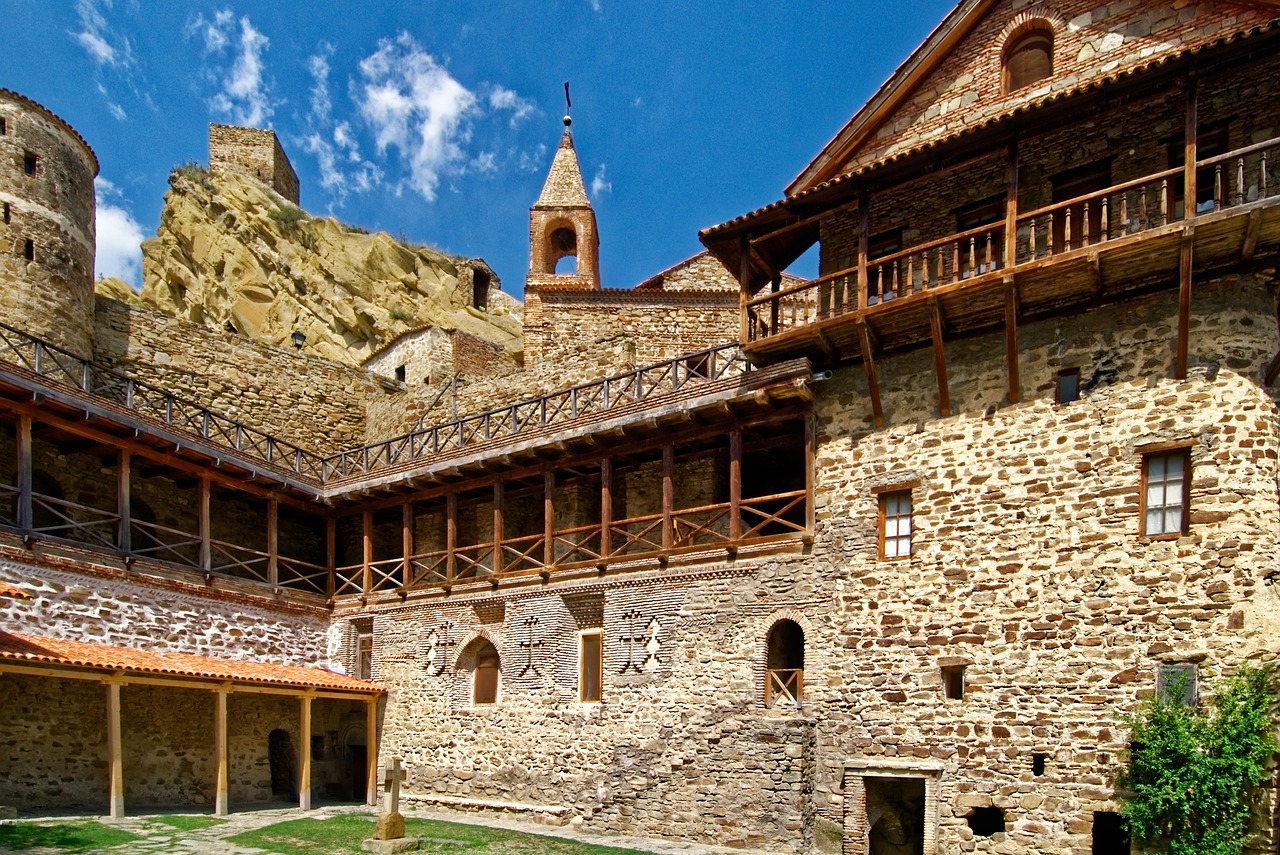
David-Gareja Monastery - St. David's Lavra
Other disciples of St John also distinguished themselves through their ascetic and missionary activities. One of them - Anthony of Martkopi – established a monastery in Kakheti. Anthony had been a disciple of John in Syria, but he did not come to Iberia with John and his other disciples, arriving only later. According to legend, Anthony was in Edessa during the Persian siege (544). He managed to capture the icon of Christ in Edessa and travel to Georgia with it. Anthony’s story was similar to those of John, Shio and David. Anthony came to Mount Martkopi, near the village of the same name, which is located near Tbilisi, east of the city, in the Kakheti region. Anthony came to this densely wooded mountain and settled at the top, in an abandoned fortress. He lived there and, like David and Lucian, was fed by deer. However, God did not want his servant to hide, and, one day, St Anthony had an unpleasant encounter with a local hunter who wanted to cut off the strange vagabond’s hand. The miracle of God intervened, and Anthony was saved. After this, his name became famous in the area. St Anthony gathered a community of monks and together they established the Martkopi Monastery. The holy relic, the icon of Christ brought by St Anthony, was kept in the Martkopi monastery for centuries until it was lost during the devastating invasions of Tamerlane in the fourteenth century.

Zedazeni Monastery
Unfortunately, we know less about other disciples of St John of Zedazeni, with only quite recent sources about them. For example, we know that two of them, St Jesse of Tsilkani and St Abibos of Nekresi, became fervent missionaries (Abibos ended his life in martyrdom) to the highland communities. Other Assyrian Fathers also founded monasteries in different corners of the Iberian kingdom and carried out active missionary work. The lives and deeds of the ‘Thirteen Assyrian Fathers’ had a profound influence on the religious life of Iberia, making Georgian monasticism a leading force in the history of the political and cultural life of medieval Georgia.